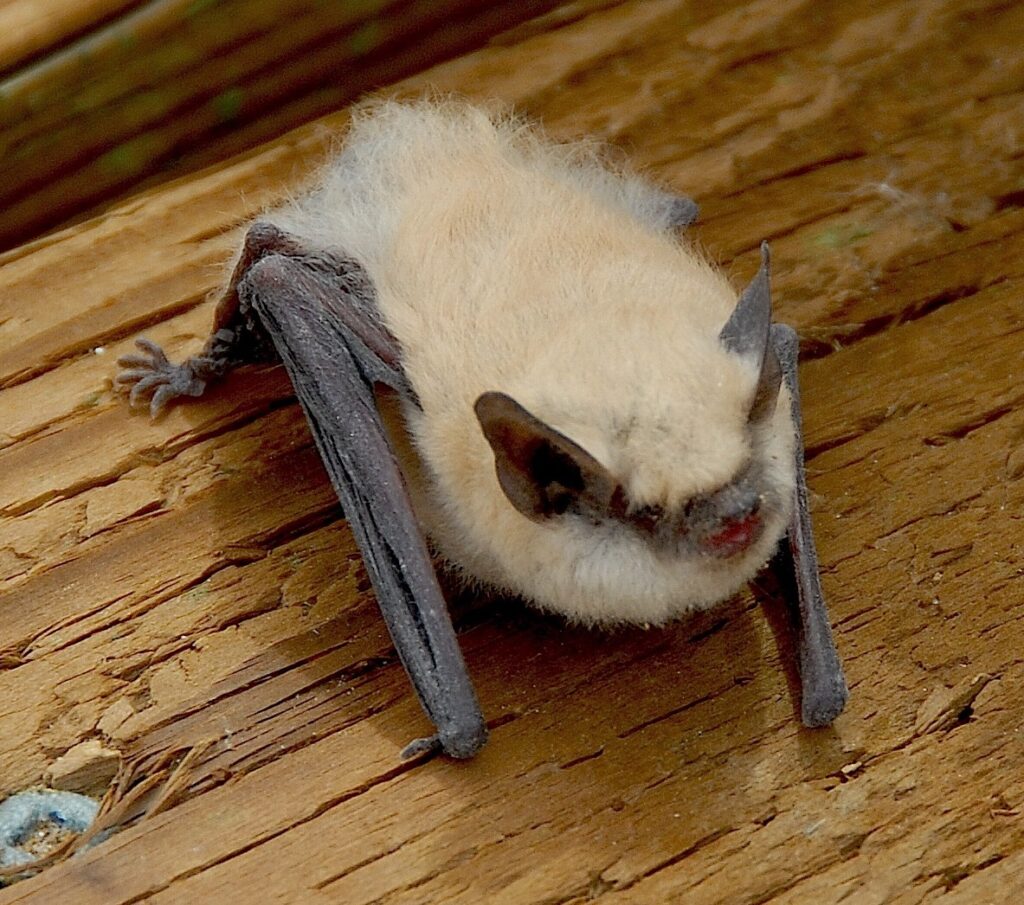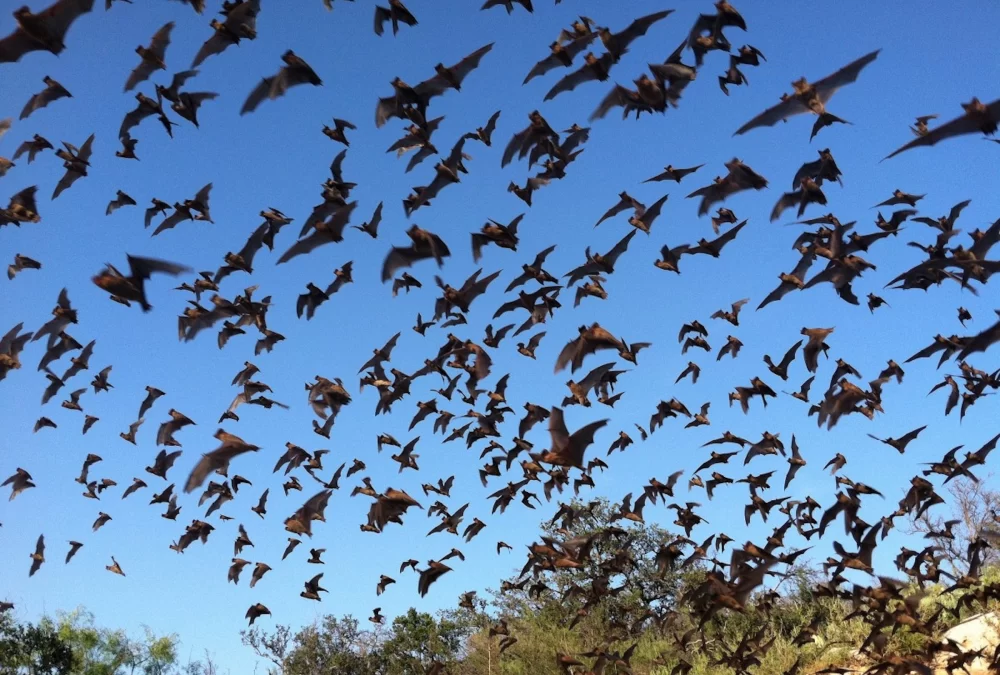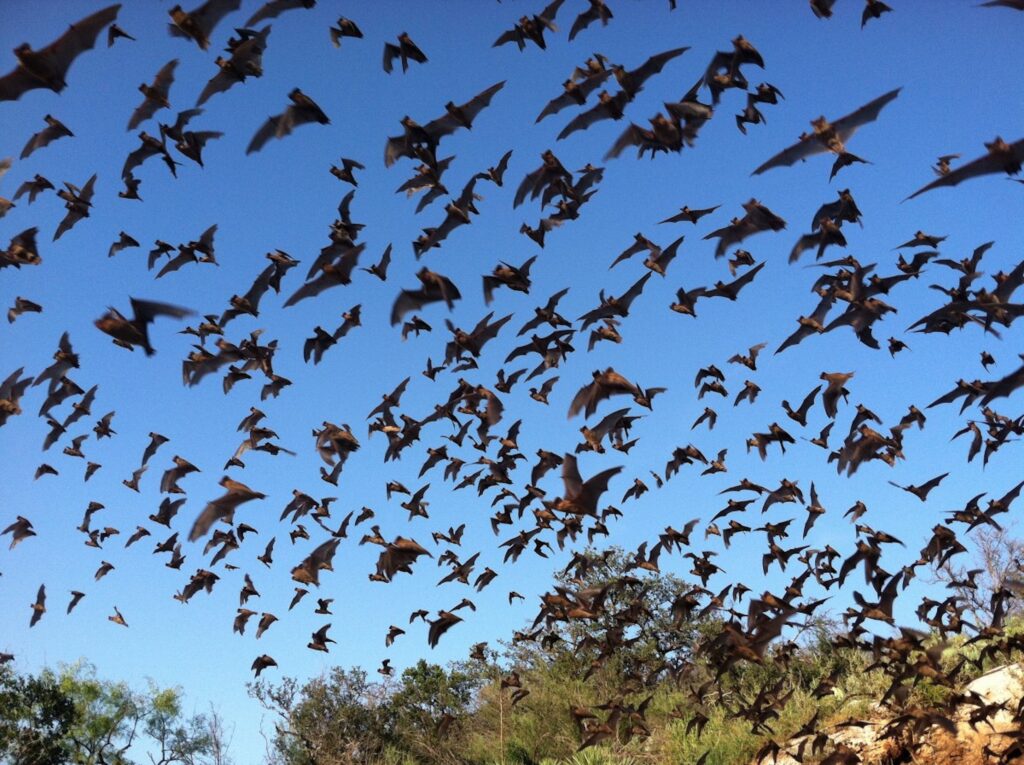
They are quiet neighbors, as elusive and silent as ghosts, despite often living side by side with humans. However, even if bats are seldom seen, they regularly make their home in the Santa Monica Mountains.
A National Park Service report on the Santa Monica Mountains National Recreation Area confirms that “bat diversity is rich and varied” within the Santa Monica Mountains. The report states that at least 20 species have been confirmed in the SMMNRA, while California has a total of 24 species. The Santa Monica Mountains Local Coastal Program recognizes that “at least 12 species of bats” occur in the Santa Monica Mountains, and notes that all of them are considered sensitive species.
The local bats range from the canyon bat (Parastrellus hesperus) a tiny bat that flutters like a butterfly, to the western mastiff bat—the largest species of bat in the Santa Monica Mountains, with a wingspan of up to two feet.
A new Natural History Museum of Los Angeles County backyard bat survey identifies 16 known bat species in urban L.A. Bats do not adapt well to urbanization and habitat loss, but the NHM researchers are finding that these species are able to survive, “thanks to special habitat modifications that allow roosting and foraging.”
The NHM study is focused on bat habitat in the urban core of L.A. and doesn’t include the Santa Monica Mountains, but the observations being collected are filling major data gaps for the L.A. area., and providing insights for the broader bat research community, which is working to develop a better understanding of seasonal and migratory bat patterns across North America.
Bats in the Santa Monica Mountains have access to more undisturbed habitat than the urban bats being studied by the NHM, but they often opt to live near humans, even if we don’t realize it. Old outbuildings, stables, garages, and attic crawl spaces offer ideal roosting space for species like the Yuma myotis (Myotis yumanensis), a small bat that can fit through remarkably narrow gaps in house siding or rooflines. The Western yellow bat (Lasiurus xanthinus) is a rare case of a species benefiting from non-native landscape plants—it makes its home in palm trees.
The Mexican free-tailed bat—the most common bat in the area—can often be found in attics and old buildings, but it also takes advantage of bridges and overpasses. Female Mexican free-tailed bats congregate in small colonies in the spring to give birth and raise their young, but never in the numbers seen in more humid or tropical climates.
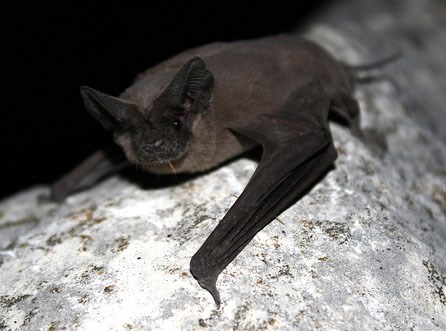
The Old Topanga Canyon Road bridges were ideal rooting habitat for this species of bat. When the old wooden bridges were replaced with concrete, habitat was lost. Los Angeles County Department of Public Works is now aware of the bat issue and has developed “bat friendly” alternatives, and privately owned bridges continue to provide shelter for this species.
The Mexican free-tailed bat is a fast and strong flyer—this species can fly as much as 100 miles in a night in pursuit of large numbers of what humans consider to be pest insects like moths and mosquitos. This is usually the bat one sees flitting overhead at dusk, although anyone taking an evening walk in the Canyon on a warm evening has a good chance of spotting several species of bat.
It’s extremely difficult to ID a bat on the wing, which is why researchers rely on acoustic monitoring Bat Acoustic Monitoring—BatAMP. For most of us, just knowing that we saw a bat often has to suffice.
Unfortunately, the one time one might have a chance to get a close look at a bat is the time to specifically stay away—that is when one encounters a bat on the ground. Less than one half of one percent of bats in the wild have rabies, but healthy bats are rarely seen on the ground, and that any bat found on the ground has a 10 percent chance of having the virus. It’s important not to touch a dead or injured bat, and to keep pets away as well. Not all wildlife rehabilitators are equipped to treat injured bats. The California Wildlife Center recommends contacting South Bay Wildlife Rehab at (310) 365-5656 for rescue and rehabilitation, or Los Angeles County Animal Care and Control, in case of a bat emergency.
All of the local species of bats are good neighbors, spending the night hours eating mosquitos and other insects and their days quietly napping, but bats have had a lot of bad press in the past 100 years, very little of it deserved.
Bats are not rodents. They belong to their own genus, and it’s a big one: one quarter of all mammals are bats. Bats are not blind, they all can see, although some have better hearing than vision. The pallid bat, a local species that hunts for large terrestrial insects like crickets and scorpions, has hearing so sensitive it can detect the sound of a beetle’s footsteps.
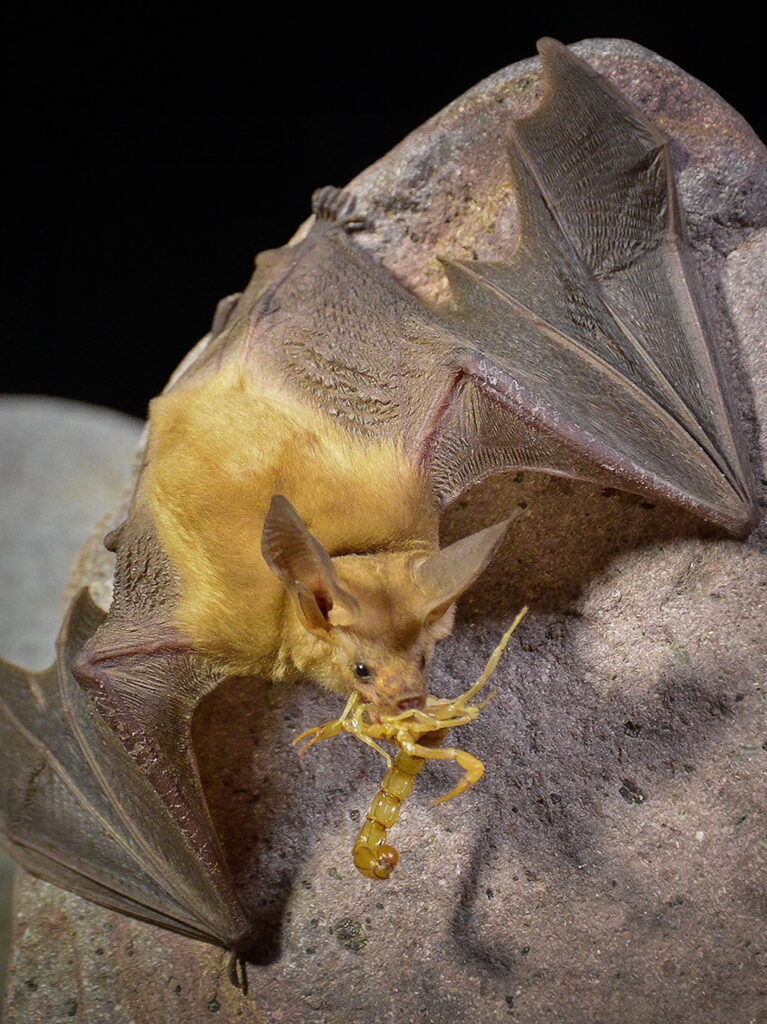
Most of our local bats use echolocation to find flying insects. The ability to use this kind of soundwave-based navigation means that bats are excellent at avoiding collisions. Contrary to popular belief, bats do not fly into people’s hair.
There are three blood-drinking species of “vampire” bat, but all are tiny—the biggest has a wing span of three-four inches—and none live in North America. And while bats have always been the denizens of empty houses, church belfries, and old ruins, prior to Irish novelist Bram Stoker’s 1897 novel Dracula, they were not in the habit of associating with vampires. In fact, there was a time when bats were regarded in much the same way butterflies are—as benign and pretty.
Pesticides and urbanization, including habitat loss and light pollution, are major threats to bat populations. The NPS states that its biologists have identified “many key roosting and foraging areas that require protection,” but admits that there have been no studies on “the effects of urbanization and fragmentation on bat populations in [the SMMNRA].”
Some people don’t mind sharing attic space with bats, and many don’t even realize that they have bats for neighbors, but unwelcome bats can be humanely excluded by taping a piece of plastic over all of the opening used by the bats. The plastic should be taped on top and left to hang open, like a cat door flap, for at least a week. Bats will then be able to leave but not return.
Bat-proofing by sealing up cracks and gaps can also help prevent rodents from making themselves at home, and can help make a house more resistant to fire by keeping wind-blown embers out, but it’s essential not to attempt to exclude bats or seal them out during the breeding season, which usually lasts from spring until late summer.
Bats are an important part of the local ecology and they are also a key indicator species. When they decline it is a sign of a potentially catastrophic cascade of biodiversity loss. We are fortunate to share our mountains with such a wide variety of bat species. By being good neighbors by avoiding toxic pesticides, ensuring backyard lighting meets dark sky guidelines and being sensitive that bats may be living in backyard trees or under the eaves, we can continue to coexist with these mysterious and often misunderstood winged beings that are so rarely seen but so important to the ecology.
To learn more about the NHM’s Backyard Bat Survey, and to see photos of all of the species identified in the study, visit https://nhm.org/
